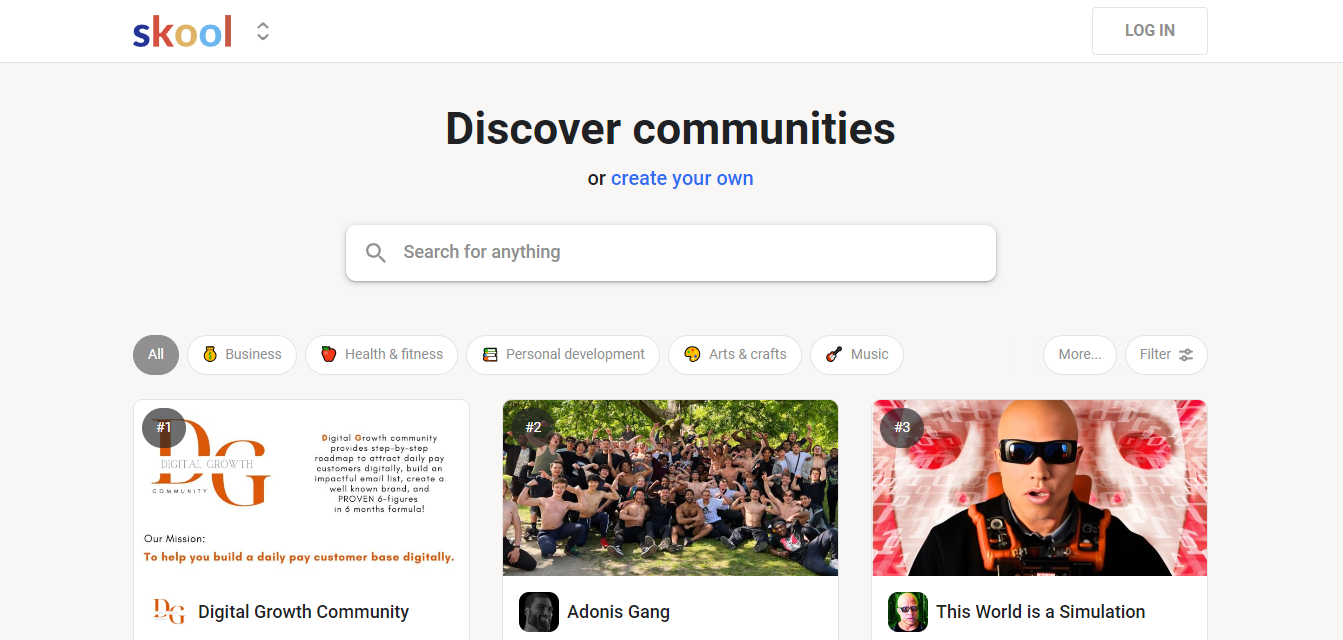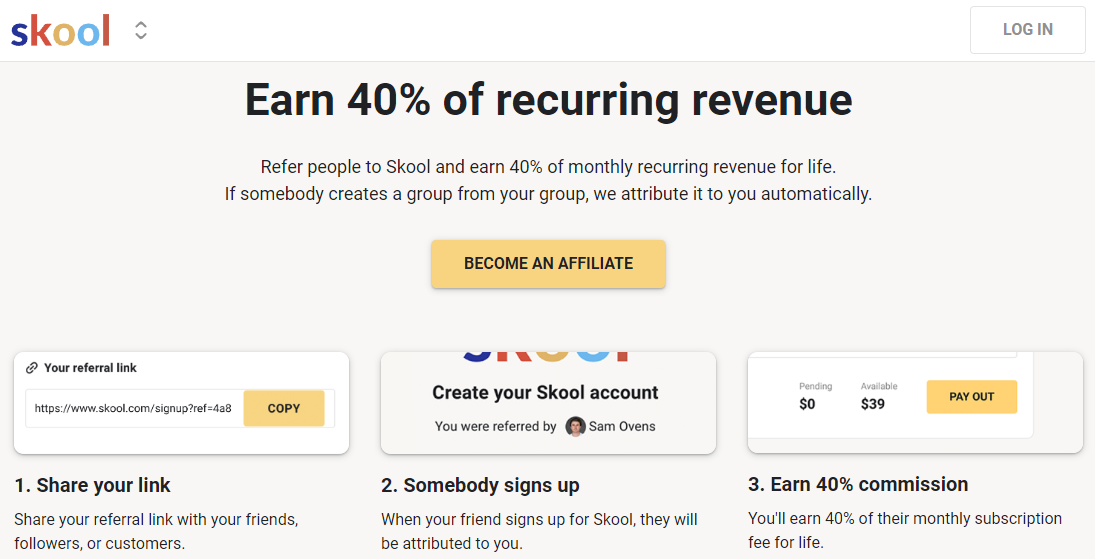The neighborhood feature has actually been Skool’s main emphasis when developing new features. Its interface looks like a Facebook group feed and allows admins and participants to make blog posts with text, video, polls, links and GIFs.
The system likewise includes gamification capabilities to encourage students and assist in links. These include leaderboards, degrees, points and rewards to increase involvement.
Program development devices
Skool permits you to produce web content using its course production devices, which is an excellent method to construct your very own courses. The tool provides a WYSIWYG interface, so you can see how your web content will try to find students as you are producing it. It additionally supplies the capability to add a series of multimedia properties, including video clips and audio files. It likewise offers a drag-and-drop editor for assembling your lessons.

One of the distinguishing functions of Skool is its community-building performance, which allows users to communicate with each other through a Facebook-like user interface. This is useful for developing a feeling of area amongst trainees, mentors and experts. It additionally provides a leaderboard that rewards leading contributors. This is a wonderful way to obtain new members to join your area and remain involved.
The system is easy to use and can be utilized by any person. It is available in multiple languages and is made to work with mobile phones. Skool can be used by tiny groups of writers with basic styles, or by bigger organizations. However, the tool does not have some crucial features, such as evaluation devices, which can aid track learning impact and support pupil achievement. It additionally doesn’t have a durable workflow administration system, so it can be hard to manage team projects. This is a downside for lots of companies, as it can cause lengthy delays in releasing web content.
Community-building performances
The community-building functionalities on Skool allow you to produce an appealing, inviting setting for your members. You can organize one-off courses, create team events and post Q&A phones call to encourage interaction and engagement. The platform likewise enables you to produce degrees for your neighborhood participants and award them with benefits like free weekly liability calls or Synthesizer account templates when they get to specific degrees of involvement.
This is a fantastic method to keep interaction and encourage your community to maintain growing. It additionally helps you provide more value to your participants by supplying new material regularly. You can also develop a community calendar with upcoming group calls, in-person events and various other vital dates to aid your target market stay informed. The area schedule will automatically transform the time to your participant’s local timezone, which makes it simpler for them to remember and access.
Other features consist of the capacity to talk with other participants, adhere to messages, obtain alerts in-app and through e-mail and tune choices. Users can also sign up for email digests to get an extensive summary of all the current articles on their feeds. In addition, the platform gives in-depth analytics and insights for community leaders to enhance their material strategy.
Skool Max Business School
Skool includes a community-building facet that makes it stick out from various other systems. Its major user interface looks similar to a Facebook team feed, and it permits users to create discussions and share web links, video clips, GIFs and Skool Max Business School. Users can likewise discuss each other’s messages and sign up for them for brand-new replies. The platform’s gamification aspects, like factors and leaderboards, increase engagement and inspire members to produce high-value material.

One more excellent feature of Skool is its schedule area. Using this, area members can schedule Zoom meetings, YouTube livestreams, or other occasions. The schedule reveals the moment of these events in each participant’s local time area, so they can easily keep track of them.
Besides the gamification aspects, Skool additionally uses an easy-to-use material editor. The editor enables users to insert YouTube video clips, GIFs, polls, activities and web links in their articles. Additionally, the content can be organized right into rooms and groups to keep discussions and remarks arranged.
Finally, Skool’s analytics and insights include offers community leaders with useful insights right into their members interaction levels, content performance and various other essential data. This information assists area leaders and educators make educated decisions to improve the total knowing experience. This is a crucial tool for any on-line neighborhood.
User interaction
Skool features a structured straightforward user interface, which enables members to browse the system quickly. It likewise helps them focus on the web content and neighborhood without the diversions of unneeded intricacy. This simplifies the procedure of connecting with others and guarantees that the material remains relevant to their development goals. The system supports a range of neighborhood involvement features, consisting of forums and threaded discussions, as well as online occasions and workshops. These tools promote dynamic community dialogue and promote the advancement of a knowing atmosphere.
The gamification aspect of Skool aids to encourage participant involvement and boost the probability that users will go back to the platform. It offers a variety of rewards, such as points, badges and leaderboards, that incentivize members to contribute to the community. Along with these features, Skool also has a calendar that can be utilized to arrange and manage area events. This attribute allows developers to set up reoccuring events and restriction accessibility to certain participants, such as those who go to a certain degree in a course or Skool Max Business School.
One more great feature of Skool is its rich participant profiles, which resemble Instagram feeds and are designed to assist participants get in touch with each other. These profiles consist of a participant’s standard information, their degree (which is shown on their account image), the groups they come from and their everyday visual activity graph.